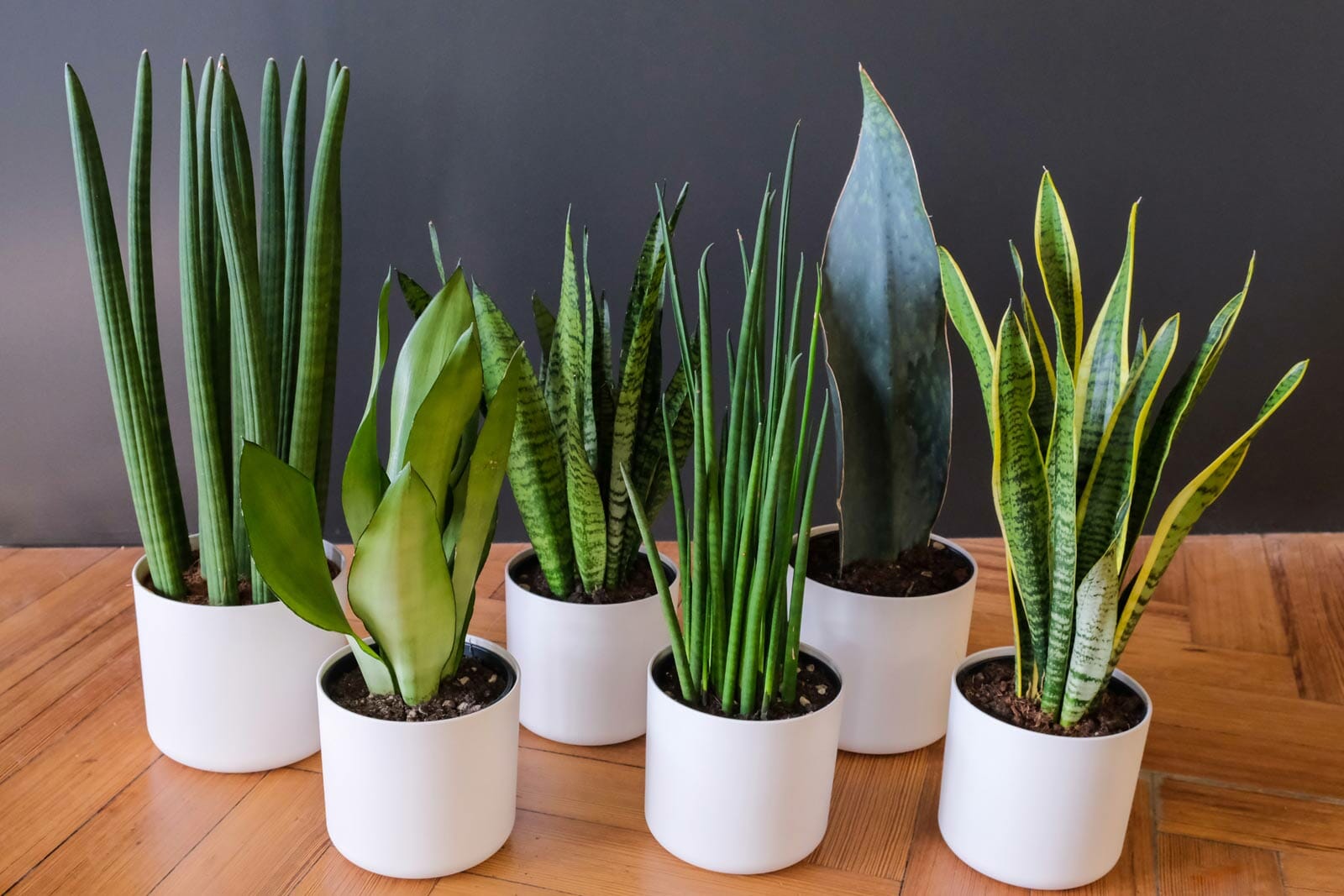Let’s be honest—sometimes you just need a plant that doesn’t judge you.
The one that survives your vacation, your forgetfulness, that time you accidentally poured coffee into the pot instead of water… yep, we’ve all been there.
Enter: the snake plant.
It’s not flashy. It won’t bloom every season. But it will outlive your optimism, your last houseplant, and probably even your Wi-Fi router.
More than just tough, though—snake plant benefits are the real deal. Cleaner air. Less stress. A little more calm in a world that feels like it’s spinning too fast.
But—and this is a big one—they’re not magic. And they are toxic to cats. So let’s talk about what they actually do, what they don’t, and how to keep one alive without turning your home into a pet hazard.
Real Benefits

You’ve probably heard it a million times: “Snake plants clean the air!”
But is that true? Or is it just plant parent propaganda?
Here’s the good news: it’s actually real. And there’s science behind it.
Purifies indoor air—night and day
Most plants take in carbon dioxide and release oxygen during the day… and do the opposite at night.
Snake plants? Not like most plants.
They use something called CAM photosynthesis—Crassulacean Acid Metabolism, if you’re feeling fancy—which lets them pull in CO₂ at night and give off oxygen while you sleep. Yep, you read that right. They work while you’re dreaming.
Even cooler? They help remove toxins from the air. According to a NASA study, snake plants can absorb pollutants like formaldehyde (from furniture), benzene (from plastics), xylene and toluene (from cleaning products), and even trichloroethylene (from printing inks).
Now, will one plant turn your apartment into a rainforest? Not quite. But in small spaces—like bedrooms or home offices—they make a noticeable difference.
Helps you sleep better
If you’ve ever woken up with a dry throat or stuffy head, the air in your bedroom might be the culprit.
Snake plants add oxygen and pull out CO₂ overnight. Not a ton, but enough to keep the air fresher. And fresher air means easier breathing, deeper sleep, and fewer 3 a.m. wake-ups.
I tried this myself—my partner was skeptical, but after a month with two large snake plants by our bed? Fewer coughs. Less snoring. And honestly? Just a nicer vibe.
Boosts mental well-being
You’ve had a long day. Work was draining. The news is bleak. And all you want is five minutes of peace.
Walk into a room with a big green snake plant standing tall in the corner, and something shifts.
It’s not dramatic. It’s quiet. But it’s there.
Studies show that just being around indoor plants can reduce stress, lower blood pressure, and boost mood. It’s called biophilia—our natural pull toward nature. And snake plants? They’re like a mini forest in a pot.
Even if you’re not into mindfulness or meditation, having a little green life around you helps. It’s like a silent reminder: “Hey, you’re alive. So is this plant. We’re doing okay.”
Super low maintenance
Look, I forget to water my plants. A lot.
My track record with ferns? Tragic. Peace lilies? RIP. Pothos? Only alive because they’re basically weeds.
But snake plants? I’ve left mine alone for two months during winter. Came back. It was fine. Like, not just alive—thriving.
This is the plant for:
- Beginners
- Travelers
- People who’ve killed everything else
- Anyone who says “I don’t have a green thumb”
They don’t need much light, they don’t freak out if you forget to water, and they rarely get pests. Honestly, they’re kind of rude in how easy they are.
How often to water snake plant?
This is the #1 question—and the #1 way people kill them.
Answer: Only when the soil is completely dry.
In summer? Maybe every 3–4 weeks.
In winter? Could be once a month—or even less.
Overwatering = root rot. And once that starts, it’s game over.
So when in doubt? Wait.
Increases indoor humidity
Dry air in winter = cracked skin, sore throats, static hair. Ugh.
Snake plants release a little moisture through transpiration—like a natural humidifier. Not enough to replace a machine, but every bit helps.
Place a few together—especially larger ones—and you’ll notice the air feels softer. Your skin will thank you.
Reduces allergens
Dust, pet dander, pollen—these float around in your home and can trigger allergies or asthma.
Snake plants don’t filter air like a HEPA filter, but they do trap particles on their leaves. Plus, cleaner air from toxin removal means fewer irritants.
Wipe the leaves with a damp cloth once a month, and boom—your plant does a mini clean.
Boosts home decor
Let’s talk looks.
Snake plants are like the little black dress of houseplants—goes with everything.
Tall, upright, architectural. They add height, texture, and a modern edge to any room.
Want drama? Go for a large snake plant in a minimalist pot. Need a privacy screen in your living room? Line up a few in matching planters. It’s like free interior design.
Believed to improve feng shui
Now, this one’s not science—but it’s fun.
In feng shui, snake plants (aka “Mother-in-law’s tongue”) are said to absorb negative energy and protect the home. Their sharp, upward-pointing leaves are thought to ward off bad chi—kind of like spiritual bodyguards.
They’re often placed near entryways, in corners, or in rooms where arguments happen. I’ve got one in my home office—mostly because it survives my chaos, but hey, if it’s blocking bad energy too? Win-win.
May reduce headaches and fatigue
No, the plant won’t cure your migraine. But better air quality + better sleep = fewer headaches over time.
And since indoor plants have been linked to improved focus and reduced mental fatigue (per studies on workplace well-being), having one nearby can help you feel sharper during the day.
Just… don’t eat it. More on that later.
Easy to propagate
One of the best parts? You can grow more—for free.
Snake plant propagation is simple. You can divide the roots or take leaf cuttings. In a few months, you’ll have new plants to gift, trade, or fill more corners of your home.
How to propagate a snake plant
- Cut a healthy leaf into 3–4 inch sections
- Let the cuts dry for a day or two (prevents rot)
- Stick them in well-draining soil (more on snake plant soil below)
- Water lightly every few weeks
- Wait. Be patient. New growth takes time.
Or, if your plant has multiple stems, you can divide the rhizomes when repotting. Pop each section into its own pot—boom, instant new plants.
Downsides

Okay. Time to be real.
Snake plants aren’t perfect. And if you have certain needs—like a curious cat or a toddler who eats everything—you need to know the risks.
Snake plant toxic to cats
This is the big one.
Yes. Snake plants are toxic to cats (and dogs, honestly).
Their leaves contain saponins—natural chemicals that protect the plant from pests, but can make pets very sick if ingested. Symptoms include vomiting, diarrhea, drooling, and nausea.
Serious? Not usually life-threatening, but no fun for your fur baby.
If your cat likes chewing plants (mine did—RIP my first snake plant), keep it out of reach. Or better yet, plant pet-safe alternatives like spider plants or parlor palms.
No snake plant flower? Don’t panic
You might see photos of snake plants blooming with white, fragrant flowers. Pretty, right?
But here’s the truth: flowering is rare, especially indoors.
It needs the right conditions: lots of light, seasonal changes, maturity. Some people wait years. Others never see it.
And that’s okay.
Flowering doesn’t mean it’s healthier. It just means it’s happy. So if yours never blooms? Good. It’s probably too busy surviving your chaos to throw a flower party.
How to Care
Even though they’re tough, they still need some love. Let’s cover the basics.
Best snake plant soil
Drainage is everything.
Snake plants hate soggy roots. So regular potting soil? Nope.
Use a fast-draining mix—like cactus or succulent soil. You can make your own: 2 parts potting soil + 1 part perlite + 1 part coarse sand.
And always use a pot with a drainage hole. Trust me on this.
Light needs
They’re flexible. They can survive in low light—but they thrive in bright, indirect light.
Perfect spot? A north or east-facing window.
South or west? Okay, but keep it a few feet back—direct afternoon sun can burn the leaves.
Repotting tips
Snake plants don’t mind being root-bound. In fact, they prefer it.
Repot only when the pot cracks or the roots are coming out the top. Every 2–5 years is usually enough.
When you do: go up just one pot size. Too much soil holds too much moisture.
Plant Varieties

Not all snake plants are the same. There are over 70 species, but these are the most common and widely loved.
| Variety | Height | Look | Care Level |
|---|---|---|---|
| Laurentii | 3–4 ft | Green with yellow edges | Easy |
| Moonshine | 2–3 ft | Silvery-green, modern look | Easy |
| Cylindrica | 3+ ft | Round, spiral-shaped leaves | Very easy |
| Hahnii | 6–8 in | Rosette shape, compact | Easy |
| Zeylanica | 2–3 ft | Deep green with wavy bands | Easy |
If you want a real statement piece, go for a large snake plant. They can grow tall and dramatic, like living sculptures. I’ve seen them reach over 4 feet in the right conditions.
Final Thoughts
So… should you get a snake plant?
Yes. But with eyes open.
It won’t solve all your problems. It won’t detox your soul or replace your air purifier.
But it will:
- Clean your air—especially at night
- Survive your worst plant parenting days
- Add peace and greenery to your space
- Be a conversation starter
- Give you the quiet joy of keeping something alive
And that? That’s worth a lot.
Just remember: keep it away from pets. Water it like you mean it (but not too often). And enjoy the slow, quiet strength of a plant that’s been through worse than you.
Got a snake plant story? A near-death rescue, a surprise bloom, a cat incident? I’d love to hear it.
Because at the end of the day, plants aren’t just about benefits.
They’re about connection.
And maybe, just maybe—about finding a little peace in a potted leaf.


















Leave a Reply
You must be logged in to post a comment.